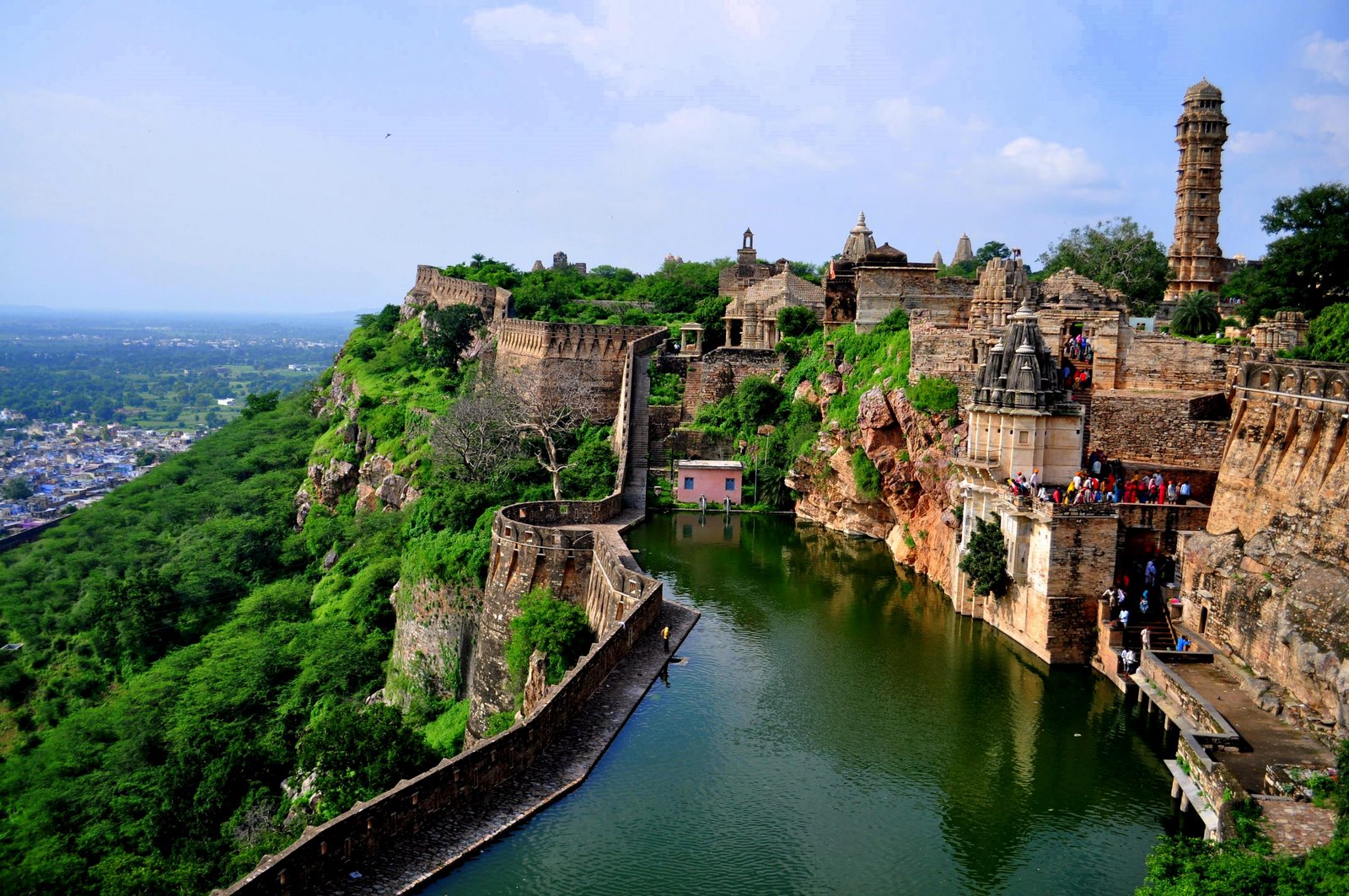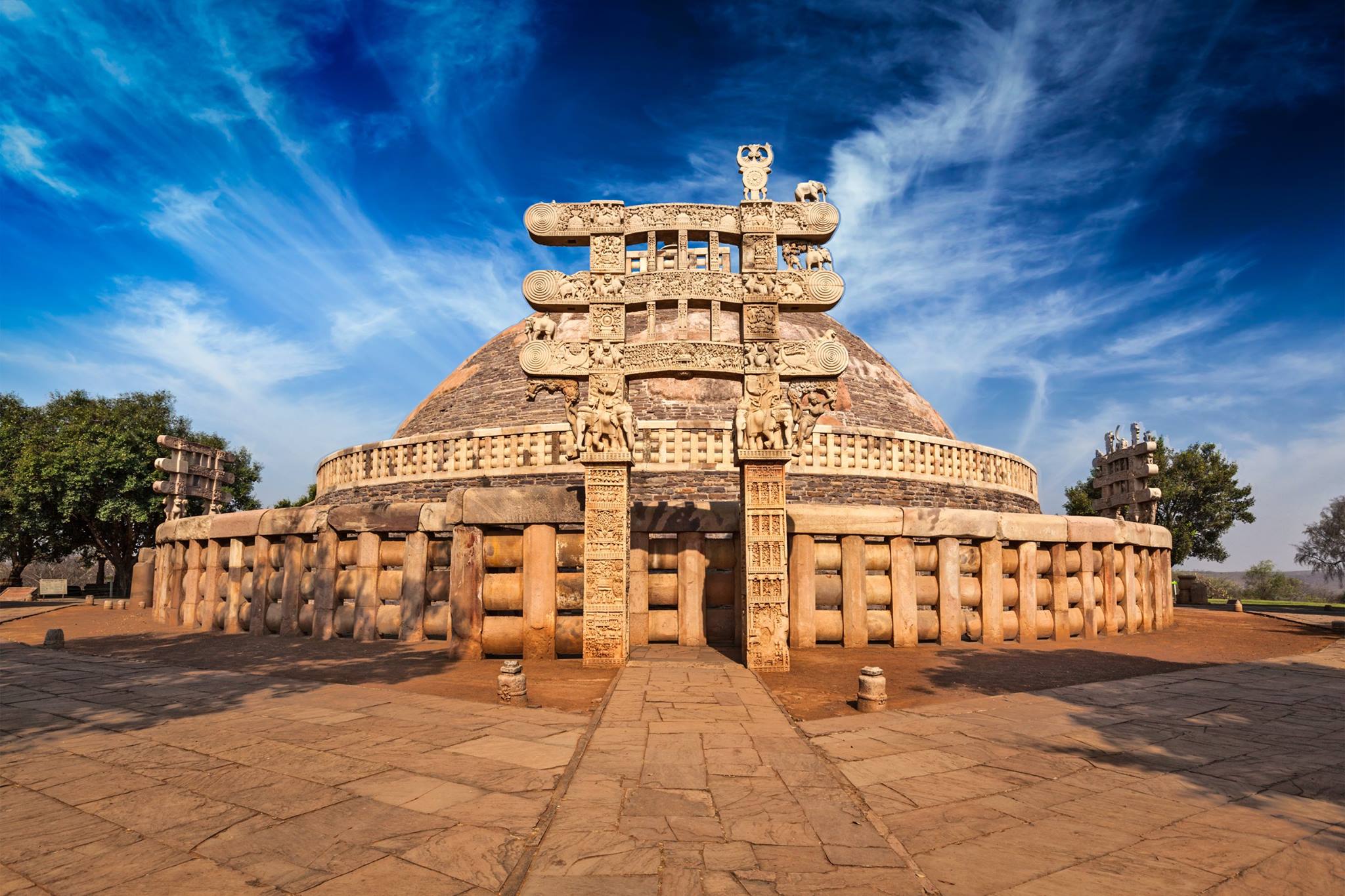
Konark Sun Temple
The Konark or Konarak Sun Temple is dedicated to the Hindu sun god Surya, and, conceived as a giant stone chariot with 12 wheels, it is the most famous of the few sun temples built in India. It is located about 35 km northeast of the city of Puri on the coastline in the state of Odisha (earlier Orissa). It was built c. 1250 CE by King Narasimhadeva I (r. 1238-1264 CE) of the Eastern Ganga dynasty (8th century CE - 15th century CE). The temple in its present state was declared by UNESCO a World Heritage Site in 1984 CE.

Chittorgarh Fort
One of the largest forts and historical places of India, Chittorgarh, the capital of Mewar kingdom has a striking attraction known as the Chittorgarh Fort. This magnificent Fort stands tall and reflects the sheer beauty, and the glorious past of the Mewar rulers. The fort is spread across 700 acres of land and is always remembered for its glorious battles, especially during the Alauddin khilji and self-sacrificing Jauhar performed by Rani Padmini.

Chola Temples
Chola Temples, built during the Chola dynasty's rule in South India (9th to 13th centuries), are a remarkable architectural and artistic legacy. The Cholas, particularly Rajaraja Chola and his son Rajendra Chola, constructed temples that exemplify the Dravidian architectural style. The Brihadeeswarar Temple in Thanjavur, an UNESCO World Heritage Site, is a prime example, featuring a towering vimana (temple tower) and intricate sculptures. Other notable Chola temples include the Airavatesvara Temple in Darasuram and the Gangaikonda Cholapuram Temple. These temples not only served as places of worship but also as centers of socio-economic and cultural activities, showcasing the Cholas' dedication to art, religion, and statecraft.
Churches & Convents Goa
Listed as part of the UNESCO World Heritage Site, the churches and convents of Goa, bear testament to the region's rich historical and cultural heritage shaped by Portuguese colonial influence. Among these, the Basilica of Bom Jesus stands out for housing the remains of St. Francis Xavier, while the Se Cathedral impresses with its grandeur as one of Asia's largest churches. The Church of St. Cajetan showcases Corinthian architecture inspired by St. Peter's Basilica, and the Church of St. Augustine's surviving tower serves as a poignant reminder of Goa's ecclesiastical past.
Golden Temple
The Golden Temple, also known as Harmandir Sahib, is a revered Sikh Gurdwara located in Amritsar, Punjab, India. Built in the 16th century, it is a symbol of Sikhism's spiritual and historical significance. The temple's striking architecture features white marble adorned with intricate gold leaf work, giving it a distinctive golden appearance. The central shrine houses the Guru Granth Sahib, the holy scripture of Sikhism, and the complex includes the Amrit Sarovar, a sacred pond. The Golden Temple promotes values of equality, inclusivity, and selfless service, exemplified through its community kitchen (langar) that serves free meals to visitors regardless of their background. Pilgrims from around the world visit the temple daily for its spiritual ambiance and cultural significance..
Taj Mahal
Taj Mahal, mausoleum complex in Agra, western Uttar Pradesh state, northern India. The Taj Mahal was built by the Mughal emperor Shah Jahān (reigned 1628–58) to immortalize his wife Mumtaz Mahal (“Chosen One of the Palace”), who died in childbirth in 1631, having been the emperor’s inseparable companion since their marriage in 1612. India’s most famous and widely recognized building, it is situated in the eastern part of the city on the southern (right) bank of the Yamuna (Jumna) River. Agra Fort (Red Fort), also on the right bank of the Yamuna, is about 1 mile (1.6 km) west of the Taj Mahal.

Jantar Mantar
Jantar Mantar in Jaipur, Rajasthan, is a remarkable astronomical observatory constructed by Maharaja Jai Singh II in the early 18th century. This collection of architectural instruments serves as a testament to Jai Singh II's passion for astronomy and his commitment to advancing scientific knowledge. The site features a series of large-scale instruments designed for precise observations of celestial bodies, including massive sundials, a gigantic equatorial sundial, and structures for measuring the positions of stars and planets. The distinctive geometric forms and meticulous construction of Jantar Mantar make it a UNESCO World Heritage Site and a popular attraction, offering visitors insight into the astronomical prowess of India during the Mughal era.

Sanchi Stupa
Sanchi Stupa, located in the state of Madhya Pradesh, India, is an ancient Buddhist monument that holds immense historical and religious significance. Constructed during the Mauryan period in the 3rd century BCE, under the reign of Emperor Ashoka, the Sanchi Stupa is one of the oldest and most well-preserved stupas in the country. The main stupa, known as the Great Stupa, is a hemispherical dome built over relics of Lord Buddha.The Sanchi Stupa stands as a UNESCO World Heritage Site, attracting visitors with its architectural elegance, religious significance, and the historical legacy it represents in the spread of Buddhism across ancient India.
Victoria Memorial
The Victoria Memorial, located in Kolkata, India, is a grand architectural marvel that stands as a symbol of the city's colonial history. Built between 1906 and 1921, the memorial was dedicated to Queen Victoria and serves as a museum and gallery. Designed in a fusion of British and Mughal architectural styles by Sir William Emerson, the monument features a pristine white marble structure surrounded by lush gardens.